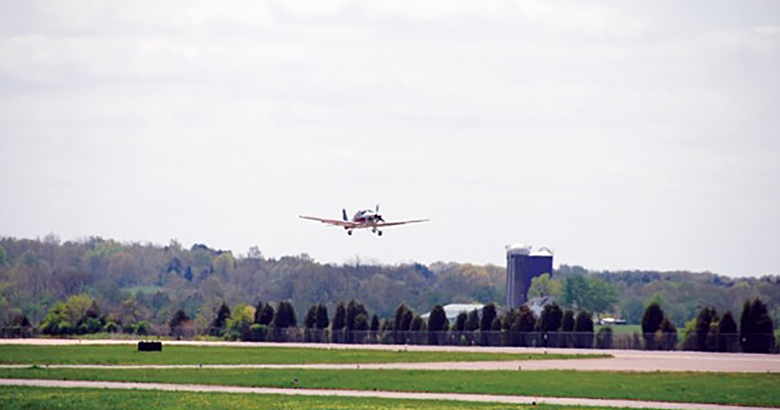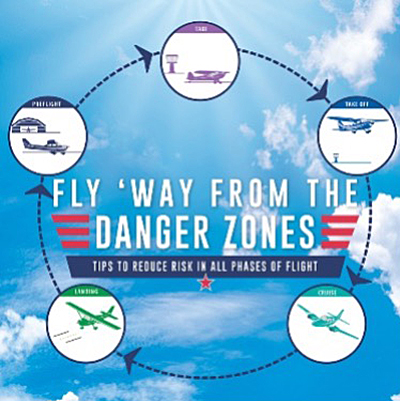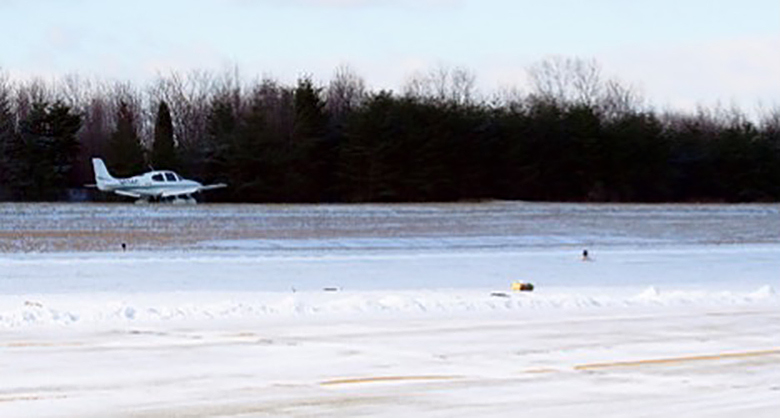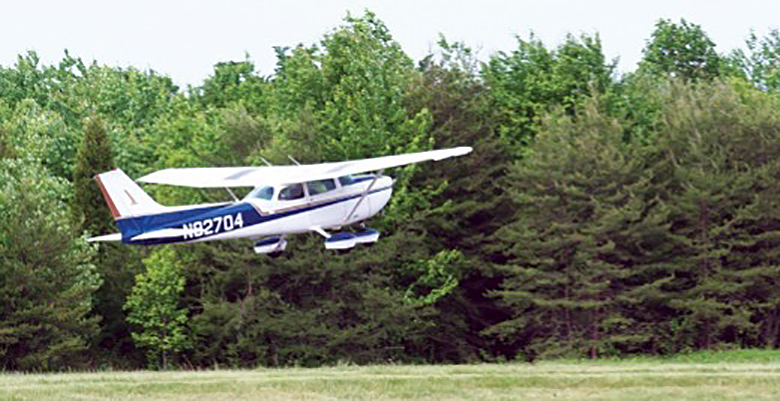Don’t Try This at home on the Runway
Common Take Off and Departure Errors
By James Williams,
FAA Safety Briefing Magazine Associate Editor

We’ve all seen the quote: “Aviation in itself is not inherently dangerous. But to an even greater degree than the sea, it is terribly unforgiving of any carelessness, incapacity or neglect.” Captain A.G. Lamplugh said that in the early days of aviation, and despite our massive technological advancement in the near century since, it still holds true. Aviation has become safer, but that unforgiving nature is still a constant threat.
Takeoffs and departures tend to be an underappreciated area of risk. We focus a lot of energy on taxiing (because of the potential of runway incursions) and approach/landing because those are the most common types of accidents. But takeoff accidents are the second most common, with 115 reported in 2019, according to the latest Joseph T. Nall report.
Takeoff carries with it some unique safety risks and opportunities. Once we have decided that a takeoff is in order, the errors we experience tend to fall broadly into three categories: planning/decision-making, management/attention, and technique errors.

Planning to Fail
The most obvious planning and decision error is not properly calculating, or not calculating at all, the takeoff performance data. This is particularly surprising given the proliferation of easy-to-use apps and programs that can provide a detailed performance calculation with just a few simple clicks or taps. If you prefer crunching the numbers by hand, by all means, do so. But there’s no excuse for skipping performance calculations. It seems simple: regularly computing your takeoff data can help you avoid missing a critical factor that might make your no-problem departure into a nail-biter or worse.
These factors might include items like density altitude or unfavorable winds, just to name a couple. It’s not uncommon to hear pilots talk about choosing to take off with a tailwind simply because they don’t want to taxi to the other end of the airport so as to save time (and money). Some assume that a since a headwind will slightly reduce your takeoff run, a tailwind would only have a slight increase in takeoff distance. But a tailwind takeoff is much worse. In the case of a Cessna 172, it’s actually four and a half times worse. While takeoff distances are decreased by 10% for every nine knots of headwind, they are increased by 10% for every two knots of tailwind. So even a few knots of tailwind make for a significant reduction in performance and a much longer takeoff. But if you don’t calculate it, you won’t know that.
Scanner Error
Errors also arise from aircraft management and attention. During takeoff, our focus should be mainly outside the cockpit, but don’t exclude cockpit instruments entirely. We should be making sure all the information is in alignment. Does what you’re seeing and hearing outside match what your instruments are saying? Specifically, does your airspeed indicator match what you see through the windshield? Does your engine sound, feel, smell, and look to be operating normally according to your instruments and other info? If you see something a bit off, you can either abort or alter your post-lift-off itinerary depending on the anomaly. Managing the aircraft and your attention to it is a balancing act, so working up a good scan for takeoff is worth the practice. That’s because you also need to ensure that your runway environment is clear and stays that way.
 Runway conditions can affect your takeoff performance.
Runway conditions can affect your takeoff performance.
Do Try This at Home?
Experience can be a harsh teacher. But when dealing with technique, it can be hard to learn without actually doing. It’s one thing to know, academically, that when I push the throttle forward for departure, I’m going to have a left turning force that I have to counter with right rudder. It’s another thing to know exactly how much right rudder correction to apply in real life.
To do some learning from experience without risking bending metal or breaking bones, I fired up a PC simulator and made a bunch of mistakes. I mean, I made a ton of errors. I even made a list to ensure I covered most of the common takeoff errors. The biggest takeaway for me from all of these screw-ups was how much they tended to compound — a result that can lead to a classic snowball debacle where you’re “chasing the needle” in an attempt to regain control. This was especially true of the left-turning tendency. Rudder errors often led to swerving back and forth across the runway. It was even worse with a sharp throttle movement that felt at times like it verged on unrecoverable even on a wide airline-sized runway. Seeing how much smooth throttle and rudder application helped with taming this issue was a great use of simulation.
Pitch and speed errors didn’t feel as immediately sketchy as rudder errors, but they have a special place in my memory as it was an area I struggled with early in my training. I had a bit of experience in one type of airplane before my formal training started, so my first instructor told me to “just pull back a little and let the plane fly off.” I did precisely that, at least in my estimation. My prior experience gave me an incorrect impression of what just a little pullback on the elevator meant in our training aircraft. Not using a proper attitude for takeoff makes for a longer, and possibly unstable ground roll. Of course, the opposite is true as well. Over-controlling the elevator, especially shortly after liftoff, can create another “chase the needle situation,” this time in the vertical plane and with the risk of a stall.
 Takeoff attitude can be critical, especially when dealing with obstacle clearance.
Takeoff attitude can be critical, especially when dealing with obstacle clearance.
Then there are wind correction errors. We’ve already touched on tailwinds, best handled by planning. But crosswinds are generally a fact of life. You can plan to minimize them, but you must correct for them while on the takeoff run and initial climb. Even if you don’t have too much trouble getting off the ground, you will find yourself getting blown into areas your fellow pilots and ATC don’t expect you to occupy. This, in turn, can cause conflicts with other aircraft or potential obstacles that wouldn’t be a problem if you were on course. It could happen at my old training airport, where they could run two GA patterns that required airplanes on the smaller runway, which was the one we preferred, to turn crosswind as soon as possible to give them more margin. If you were getting shoved north by the wind, it would be possible to create a potential conflict.
It seems simple, but regularly computing your takeoff data can help you avoid missing a critical factor that might make your no-problem departure into a nail-biter or worse.
That’s why training in a “safe” environment is a great way to build experience while limiting or eliminating risk. Whether it’s through simulation or real-world flying with a good instructor, putting in the practice is essential. Doing a few practice performance calculations in your downtime is a great way to build proficiency with whatever tool you use and gives you a chance to practice your go/no-go decision-making and risk mitigations. That practice will make the calculations on an actual flight quicker and easier. If you have access to some kind of simulator, they are a great way to practice skills to the point of failure and in whatever condition you want. This lets you practice in “hard mode” so that, hopefully, real life is easy.
The biggest thing is to avoid letting problems snowball. Practicing shows you how these errors can blend into each other and worsen a bad situation. Learning how to intervene early and with the correct amount of force can help to stop that snowball before it becomes an avalanche.
Learn More
- FAA Airplane Flying Handbook, Chapter 6: Takeoffs and Departure Climbs
- Going Up? Taking Control of Your Takeoffs, FAA Safety Briefing, March April 2016, p. 14
James Williams is FAA Safety Briefing’s associate editor and photo editor. He is also a pilot and ground instructor.
Reprinted with permission from FAA Safety Briefing. Visit the Flight Safety Briefing website: https://www.faa.gov/news/safety_briefing/.



